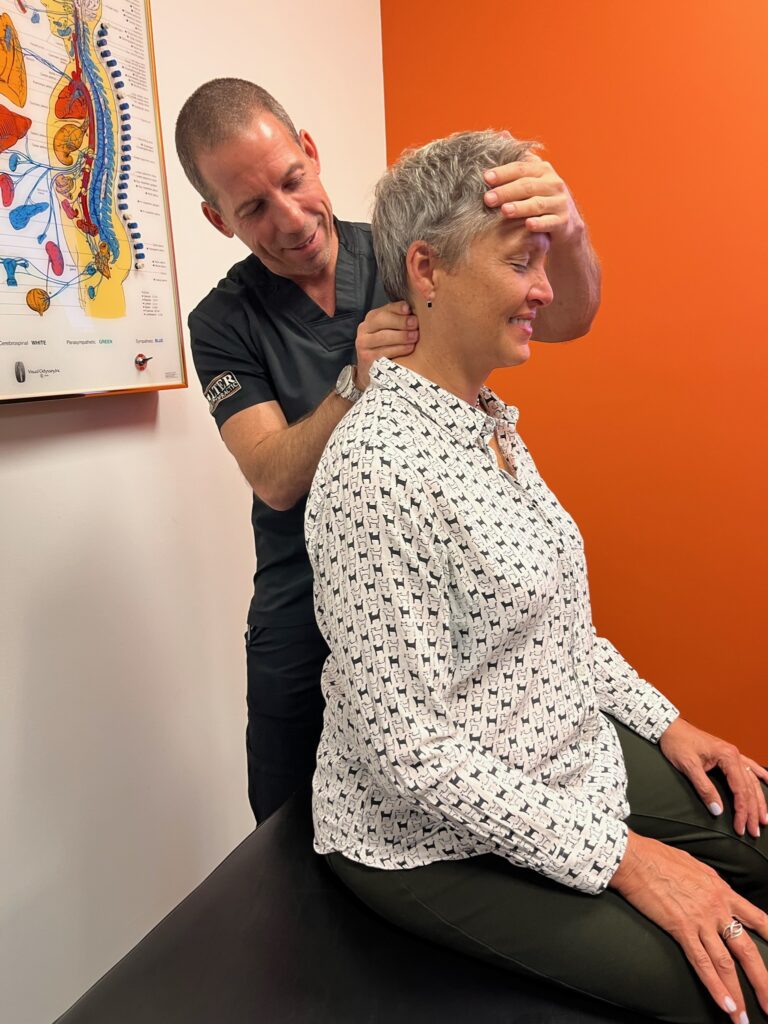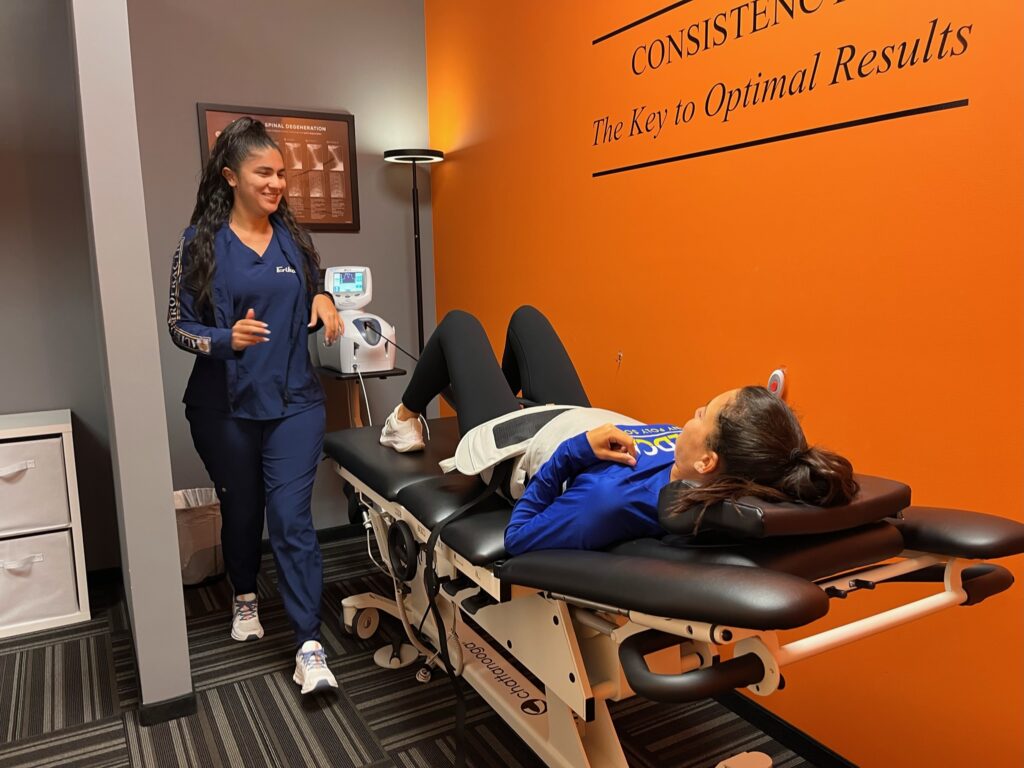Have you ever wondered why adjustments can make such a difference in your mobility and flexibility? When you experience proper spinal alignment and joint function, your body can move more freely and efficiently. These adjustments not only address muscle tightness but also enhance circulation and activate important neural pathways. By understanding the underlying mechanics, you can appreciate how these changes contribute to improved physical performance and overall well-being. But what specific factors play a vital role in this process, and how can you incorporate adjustments into your routine for lasting benefits?
Understanding Adjustments
When it comes to mobility and flexibility, understanding adjustments is essential for enhancing your overall well-being. Adjustments, whether through chiropractic care, physical therapy, or personal exercise routines, play a significant role in improving how your body moves. They help realign your musculoskeletal structures, allowing for smoother and more efficient movement patterns.
You may not realize it, but your daily habits could lead to misalignments and tightness in your muscles and joints. Think about how often you sit for long periods or perform repetitive tasks. These activities can create restrictions that limit your range of motion. By understanding adjustments, you can identify areas where your body needs support and correction.
Incorporating regular adjustments into your routine can help restore balance and enhance flexibility. You might experience a greater ability to perform daily activities without discomfort or fatigue. It's not just about feeling good in the moment; it's about preventing future injuries and improving your overall performance in sports or physical activities.
Moreover, adjustments also involve stretching and strengthening targeted muscle groups. By focusing on these areas, you can actively enhance your overall mobility. You'll notice improvements not just in how you move, but in your posture and energy levels as well.
The Role of Spinal Alignment
Spinal alignment plays an essential role in your overall mobility and flexibility. When your spine is properly aligned, it allows for ideal movement, ensuring that your body can bend, twist, and stretch without unnecessary restrictions. Misalignments can lead to tension and discomfort, which can hinder your ability to perform daily activities or engage in physical exercise.
Think about it: your spine is the central support structure of your body. It houses the spinal cord, which carries signals between your brain and the rest of your body. If your spine is out of alignment, those signals can be disrupted, leading to issues like stiffness and reduced range of motion.
Correct spinal alignment promotes better posture, which can enhance your ability to move freely and efficiently. Adjustments, whether through chiropractic care or other methods, can help restore proper alignment.
Impact on Joint Function
Proper joint function is crucial for maintaining mobility and flexibility. When your joints operate effectively, you can move freely and perform daily activities without discomfort. Adjustments play a significant role in enhancing this function by ensuring that your joints align correctly and work in harmony with surrounding structures.
Think about how your joints connect bones and allow movement. If they're misaligned or restricted, it can lead to decreased range of motion and increased stiffness. Adjustments can help restore proper alignment, allowing your joints to function at their best. This realignment reduces stress on the joint surfaces and promotes better lubrication, which is critical for smooth movement.
You might notice that after receiving an adjustment, you feel more agile and capable of bending, twisting, and engaging in physical activities. These adjustments can also improve proprioception, your body's ability to sense its position in space. When your joints function properly, you become more aware of your body's movements, leading to improved coordination and balance.
Moreover, healthy joint function can decrease the risk of injury. When your joints move as they should, they distribute forces evenly during physical activities, minimizing the chances of strains or sprains. This means you can enjoy a more active lifestyle with greater confidence in your body's capabilities.
Alleviating Muscle Tension
Muscle tension often arises as a result of joint misalignment or restricted movement. When your joints aren't functioning properly, your muscles have to compensate, leading to tightness and discomfort. Adjustments can help alleviate this muscle tension by restoring proper alignment and function to your joints, allowing your muscles to relax and recover.
When you receive an adjustment, your chiropractor or therapist targets specific areas of tension. This targeted approach helps release the tightness in the surrounding muscles, which may have been overworked due to misalignment. As your joints regain their proper range of motion, your muscles can finally relax, reducing the tension that's been causing discomfort.
You'll likely notice an immediate difference in how your body feels right after an adjustment. The release of muscle tension can improve your overall sense of well-being and make everyday activities more comfortable.
As your body adjusts to its newfound alignment, you might experience increased mobility, flexibility, and even improved posture.
Additionally, regular adjustments can help prevent the accumulation of muscle tension over time. By maintaining proper alignment, you're less likely to put undue stress on your muscles, which means you can stay active and engaged in your daily life without the nagging discomfort of tight muscles.
Enhancing Circulation
Boosting circulation is essential for overall health and can be greatly improved through adjustments. When your body receives proper adjustments, it helps remove blockages in your blood flow, allowing oxygen and nutrients to reach your organs and tissues more effectively.
This isn't just about feeling good; it's about ensuring your body functions at its best.
Here are some key benefits of improved circulation through adjustments:
- Enhanced oxygen delivery: Your muscles and organs need oxygen to function efficiently, and adjustments can facilitate better delivery.
- Faster recovery: Improved circulation helps reduce muscle soreness and speeds up recovery after workouts or injuries.
- Increased energy levels: A well-circulated body means more energy as your cells get what they need to thrive.
- Lower risk of cardiovascular issues: Consistent adjustments may help reduce the chances of developing heart-related problems by promoting healthy blood flow.
- Better temperature regulation: Good circulation helps maintain a stable body temperature, ensuring you stay comfortable in various environments.
The Nervous System Connection
When you think about mobility and flexibility, the role of your nervous system can't be overlooked.
Activating neural pathways not only boosts your movement but also helps reduce pain.
Understanding this connection can enhance your overall physical performance and comfort.
Neural Pathway Activation
Neural pathways play a crucial role in your body's ability to move and adapt. These pathways are the communication lines between your brain and muscles, facilitating coordinated movement and responsiveness. When you receive adjustments, you activate these pathways, enhancing your overall mobility and flexibility.
- Improved coordination between muscle groups
- Faster reaction times during physical activities
- Increased proprioception, or awareness of your body's position
- Enhanced motor control for complex movements
- Better overall body awareness
By stimulating these neural connections, adjustments help retrain your nervous system, allowing it to function more efficiently. This means your body can respond more effectively to various stimuli, whether you're engaging in sports or daily activities.
When you engage in regular adjustments, you're not just addressing the immediate physical needs; you're also fostering a healthier nervous system. This ongoing activation of neural pathways encourages better communication between your brain and body, leading to improved movement patterns and reduced risk of injury.
Embracing adjustments can make a noticeable difference in your physical performance and daily comfort, opening the door to a more active lifestyle.
Pain Reduction Mechanisms
Pain can be a debilitating experience, but understanding how the nervous system manages it can pave the way for effective relief. When you experience pain, your body sends signals through neural pathways to alert you, but these pathways can also be influenced by adjustments. By manipulating specific areas of the spine, adjustments can promote a more balanced nervous system, helping to alleviate pain.
The nervous system plays an essential role in pain modulation. When you receive an adjustment, it can stimulate the release of endorphins, your body's natural painkillers. This not only reduces the sensation of pain but also enhances your overall sense of well-being.
In addition, adjustments can correct misalignments that may be irritating nerves, reducing inflammation and allowing for improved communication between your brain and body. As your body becomes more aligned, you'll likely notice a decrease in pain signals sent to your brain.
This reduction can create a positive feedback loop: less pain leads to greater mobility, which in turn fosters further improvements in flexibility and function. By understanding the nervous system's role, you can appreciate how adjustments can be an effective tool for pain relief.
Benefits for Athletes
Enhancing mobility and flexibility offers athletes a competitive edge in their performance. When you incorporate adjustments into your routine, you can access numerous benefits that directly influence your game. Here are just a few ways these adjustments can help you:
- Improved Range of Motion: Increased flexibility allows for greater movement efficiency, enabling you to execute techniques more effectively.
- Injury Prevention: Enhanced mobility helps reduce the risk of injuries by promoting proper biomechanics and muscle balance.
- Faster Recovery Times: Adjustments can speed up recovery from workouts or injuries, allowing you to return to training sooner.
- Better Posture: Improved alignment can lead to better posture, which is essential for maintaining endurance and performance during long events.
- Enhanced Strength: With better flexibility, you'll engage muscles more effectively, leading to greater strength output.
As an athlete, you know that every advantage counts. Adjustments help you move more freely and efficiently, which can be the difference between winning and losing.
When your body functions at its best, you can focus entirely on your performance rather than dealing with discomfort or limitations.
Incorporating these adjustments into your training regime not only enhances your physical capabilities but also boosts your confidence. You'll feel more in control of your body, allowing you to push your limits and reach new heights in your athletic endeavors.
Adjustments vs. Traditional Stretching
When you compare adjustments to traditional stretching, you'll notice some key differences.
Adjustments can enhance joint function and promote increased muscle relaxation more effectively than static stretches.
Understanding these advantages can help you make better choices for your mobility and flexibility routine.
Enhanced Joint Function
Joint function plays an essential role in your overall mobility, and choosing the right approach can make a significant difference.
While traditional stretching focuses on lengthening muscles, adjustments target the joints themselves, enhancing their range of motion and function. This can lead to more profound benefits in your daily activities and athletic performance.
Consider these key advantages of adjustments over traditional stretching:
- Improved Alignment: Adjustments help correct misalignments that may hinder joint function.
- Increased Range of Motion: Targeted adjustments can enhance the movement of joints, going beyond what stretching alone can achieve.
- Reduced Joint Pain: By addressing the root causes of discomfort, adjustments can alleviate pain more effectively.
- Better Balance: Enhanced joint function contributes to improved stability and coordination.
- Faster Recovery: Adjustments can aid in quicker recovery from injuries by promoting better joint mechanics.
Incorporating adjustments into your routine can lead to a more functional and resilient body.
By optimizing joint function, you'll not only move better but also enjoy a higher quality of life.
Embrace the benefits of adjustments and experience the difference for yourself!
Increased Muscle Relaxation
Muscle relaxation is essential for overall well-being, and adjustments can offer significant advantages over traditional stretching methods. When you receive an adjustment, it directly targets misalignments and muscle tension, promoting a deeper state of relaxation than most static stretches can achieve. Adjustments help release built-up tension in your muscles, allowing them to return to their ideal length and function.
Unlike traditional stretching, which often focuses on elongating specific muscle groups, adjustments address the root cause of muscle tightness. This means you're not just temporarily relieving discomfort; you're promoting lasting changes in your body. As the tension dissipates, you'll likely notice improved flexibility and a greater range of motion.
Additionally, adjustments stimulate the nervous system, enhancing circulation and oxygen flow to your muscles. This increased blood flow aids recovery and further contributes to muscle relaxation. You may find that after an adjustment, you feel lighter, more mobile, and less prone to stiffness.
Incorporating adjustments into your routine can complement your stretching efforts, leading to better overall muscle health. By choosing adjustments, you're investing in a holistic approach to relaxation and flexibility that can set you up for long-term success.
Long-term Mobility Gains
Achieving long-term mobility gains can transform your daily activities and overall quality of life. When you commit to enhancing your mobility, you're investing in your future self. The benefits extend far beyond just increased flexibility; they can greatly impact your physical and mental well-being.
Here are a few key advantages you can expect:
- Increased range of motion in your joints
- Enhanced athletic performance and endurance
- Reduced risk of injury during physical activities
- Improved posture and alignment
- Greater ease in everyday tasks, like bending or lifting
Long-term mobility gains arise from consistent effort and the right practices. By prioritizing adjustments and incorporating them into your routine, you'll likely notice that movements become smoother and less restricted.
Over time, you'll experience less discomfort and stiffness, allowing you to engage in activities you love without hesitation. Additionally, these gains can lead to improved muscle strength and stability.
As your body becomes more adept at moving fluidly, you'll find that your overall physical performance benefits. This improvement can't only boost your confidence but also motivate you to stay active.
Ultimately, achieving long-term mobility gains is about creating a foundation for a healthier, more active lifestyle. The investment you make in your mobility today can yield dividends for years to come, ensuring you can enjoy life to the fullest, no matter your age or fitness level.
Incorporating Adjustments Into Routine
To make the most of your long-term mobility gains, it's important to incorporate adjustments into your daily routine. Start by identifying specific areas where you feel tight or restricted. Whether it's your hips, back, or shoulders, pinpointing these spots helps you focus your efforts.
Next, schedule regular times for adjustments, just like you'd for any important appointment. Consistency is key, so consider integrating these practices into your morning or evening rituals. For example, spend ten minutes each morning doing gentle stretches or mobility exercises that target your problem areas. This can help reinforce the benefits of adjustments you receive from professionals.
Additionally, pay attention to your posture throughout the day. Make small adjustments in how you sit, stand, and move to promote better alignment and reduce strain. Using reminders, like sticky notes or phone alerts, can help you maintain awareness of your body mechanics.
Incorporating adjustments into your routine doesn't have to be complicated. You can also explore self-adjustment techniques, such as foam rolling or using massage balls. These tools can be effective for releasing tension and improving flexibility on your own schedule.
Finally, listen to your body. If you notice discomfort or lack of progress, consult a professional for guidance. By making adjustments a regular part of your life, you'll not only enhance your mobility but also foster a more active and fulfilling lifestyle.
Conclusion
Incorporating adjustments into your routine can considerably boost your mobility and flexibility. By realigning your musculoskeletal structures, you'll experience smoother movement patterns and reduced muscle tension. This improved spinal alignment and joint function not only enhances your overall physical performance but also promotes relaxation and better circulation. Whether you're an athlete or just looking to feel your best, regular adjustments can lead to long-term mobility gains that help you move freely and live life to the fullest.



